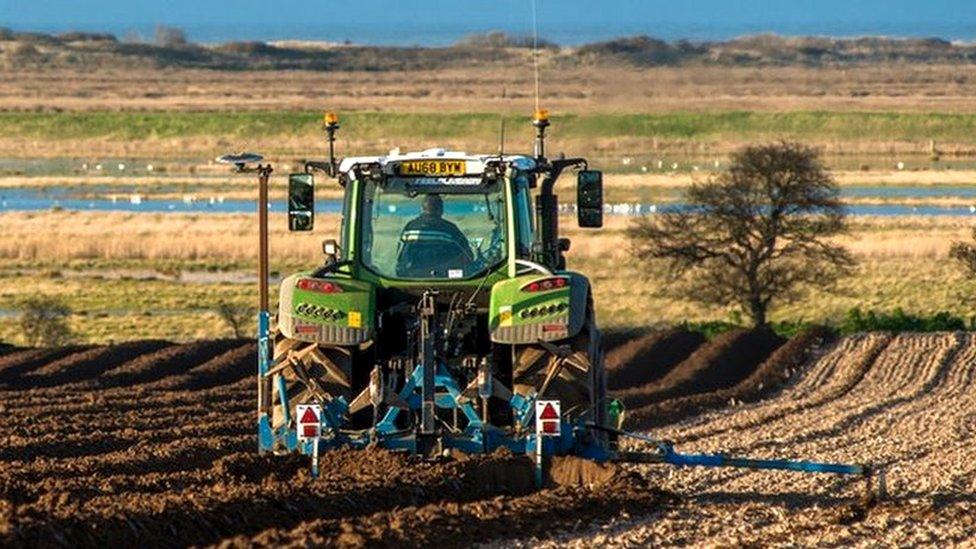Soil sampling scheme aims to improve farm yields
- Published

Philip Acheson is one of the farmers enrolled on the scheme
With hundreds of lambs born this season, Philip Acheson is a busy farmer.
"There's a lot of mouths to feed, so the more grass we can grow, the less meal we have to feed."
How well that grass grows depends on the soil, and the Achesons have been using this soil for a century on their family farm near Banbridge.
The farm was included in a pilot for a new soil nutrient health scheme, now being rolled out by the Department of Agriculture, Environment and Rural Affairs (DAERA).
"In 2016, they came round and soil-sampled our whole farm," said Mr Acheson.
"You get different maps, and each field is broken down into the pH levels, the phosphate levels and the potash levels."
The pH balance of a soil shows how acidic or alkaline it is. Phosphorus and potash, or potassium, are ingredients in fertiliser.
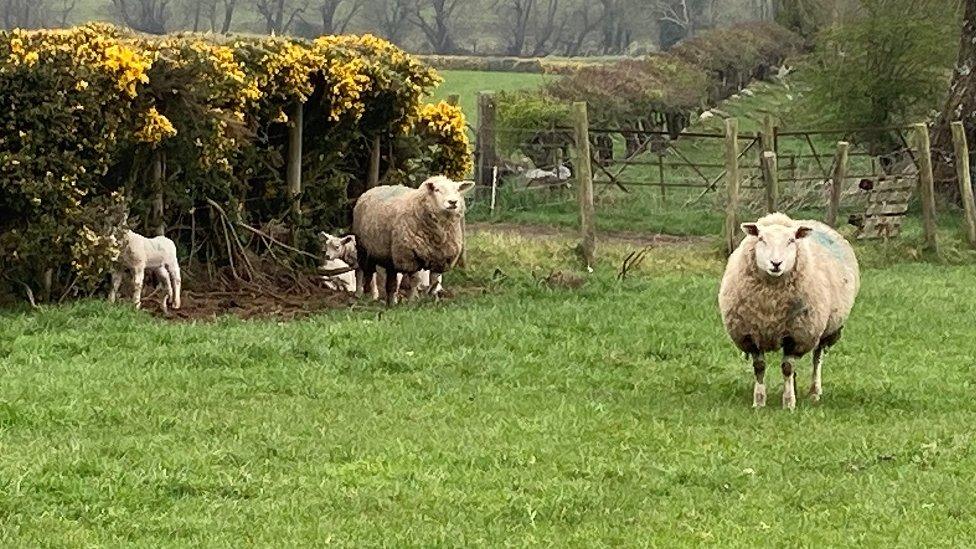
"So then you can basically target these fields and apply exactly what those fields actually need," said Mr Acheson.
The Soil Nutrient Health Scheme will see all 700,000 (approximately) fields across Northern Ireland assessed over the course of four years.
No excess fertiliser
A contractor will use a device to lift "plugs" of soil from across each field, which are collected in a bag and sent to a lab to be analysed for things like phosphorus, potassium, magnesium and sulphur.
The results are sent to the farmer and training is offered through the College of Agriculture, Food and Rural Enterprise (CAFRE) in how to tailor fertiliser and nutrient application to each field's requirements.
"If you've got slurry, you can target those fields with slurry, so that means you're not buying expensive fertiliser," said Mr Acheson.
"What we learnt was, we are now getting the maximum out of our soil. And it's helping us to put just what is required.
"We're not putting excess fertiliser on here now, which could leach into the waterways and cause pollution."
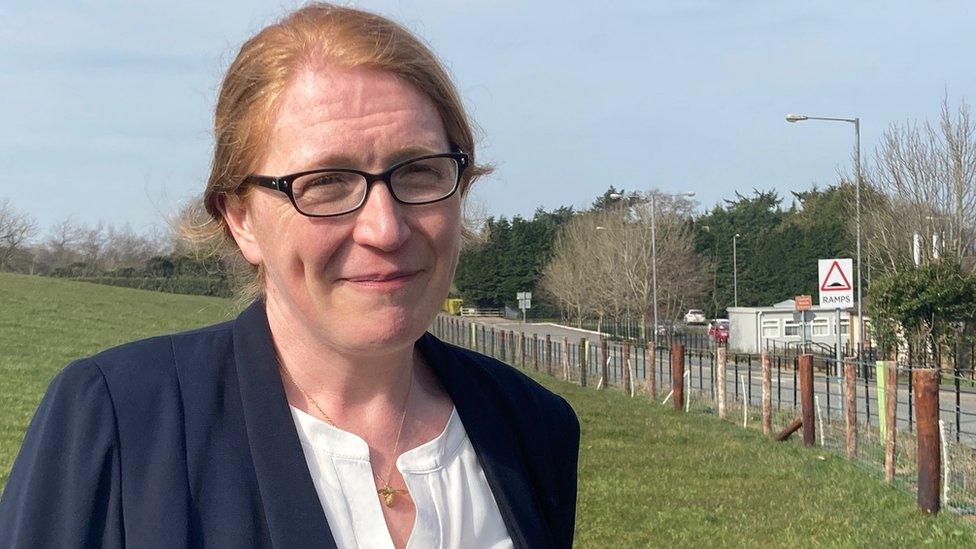
Rachel Cassidy says she is seeing improvements
Water quality was tested by the scientists involved in the pilot programme. And the affect of targeting fertiliser more strategically was clear.
"Farmers have changed practice, improved nutrient management and we are seeing decreases in the amount of phosphorus in our rivers in those catchments, which is huge in terms of the potential that this scheme could have when we roll it out across Northern Ireland," said Rachel Cassidy, the scientific lead for the scheme at the Agri-Food and Bio-Sciences Institute (AFBI).
Along with environmental improvements, the information will help make farms more efficient.
"There was a lime requirement on the majority of fields that were tested, and those fields aren't optimising the nutrients that are available," said Ms Cassidy.
Lime is used to reduce the acidity of soils, to help create a soil environment where nutrients are readily available to crops.
"Next was the levels of phosphorus in soil. There are fields that have been habitually applied to with slurries and manures for years, and a lot of those have very high P (phosphorus) indices. And that's waste, that could be redistributed elsewhere."
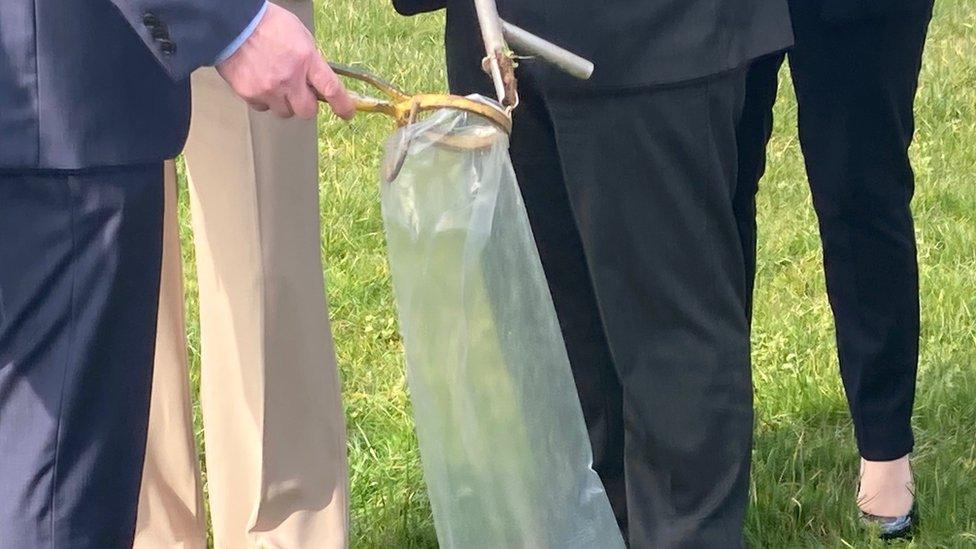
Soil plugs from a field are collected in a bag
The plugs will also be used to measure the amount of carbon stored, or sequestered, in the soil and how long it has been there.
"Healthy soil is really the foundation for ensuring future food production and productivity around it, but also setting that scene in terms of leading practices in terms of environmental conscience farming practices, while also looking at environmental challenges and the future in terms of climate change," said Pieter-Jan Schön, Director of Environment and Marine Sciences at AFBI.
The scientists said Northern Ireland could become a world leader in maximising soil health for environmental benefit.
He described it as an "ambitious and transformative scheme" for Northern Ireland.
"Testing soil and providing nutrient baseline information as well as soil carbon and above-ground carbon, helping farmers to optimise those nutrient applications but also addressing environmental challenges like water quality, air quality and in particular in relation to carbon."

Pieter-Jan Schön says it is an "ambitious and transformative scheme"
Northern Ireland will be divided into four zones, with sampling mainly carried out during winter months when fertiliser and nutrients are not being applied to fields.
As well as soil sampling, there will be a LiDAR (Light Detection and Ranging) survey, where an aircraft will use a laser to create a map showing water run-off areas, and the extent of hedgerows and trees on a farm.
'Not an overnight fix'
The first zone to be sampled will be the South East, followed by the South West, the North West, and finally the North East.
The Acheson farm is part of the first area to be sampled.
"It's not an overnight fix," said Mr Acheson.
"There's huge amount of information, invaluable information. It's going to take time for you to get your soil back up to where it wants to be.
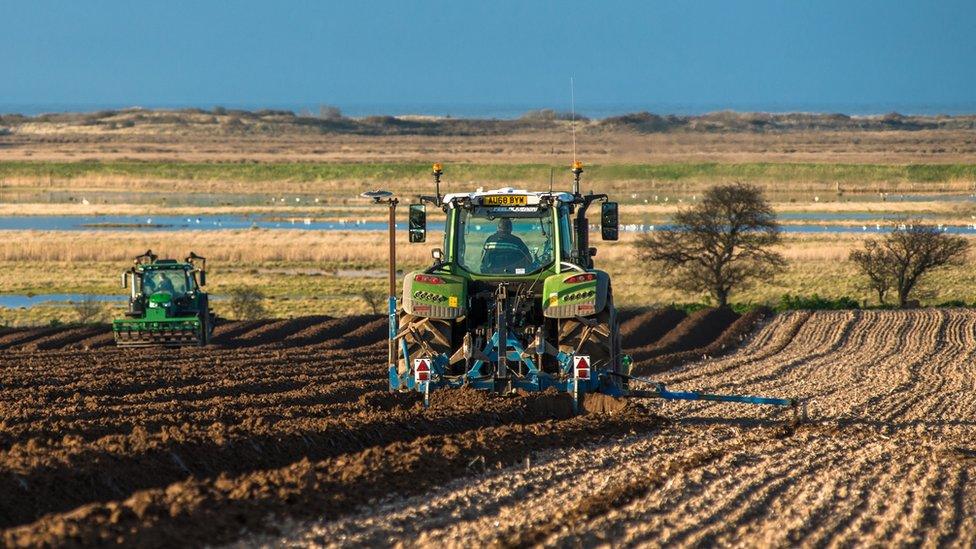
"But in our current situation, with the current prices of fertiliser, it is a winner."
The scheme will roll out from May 2022, with farmers in each zone contacted directly when sampling contractors are in their area.
More details are available on the DAERA website.
Related topics
- Published2 December 2021
